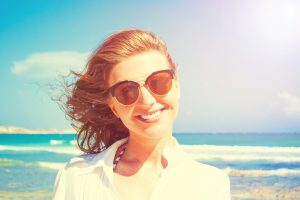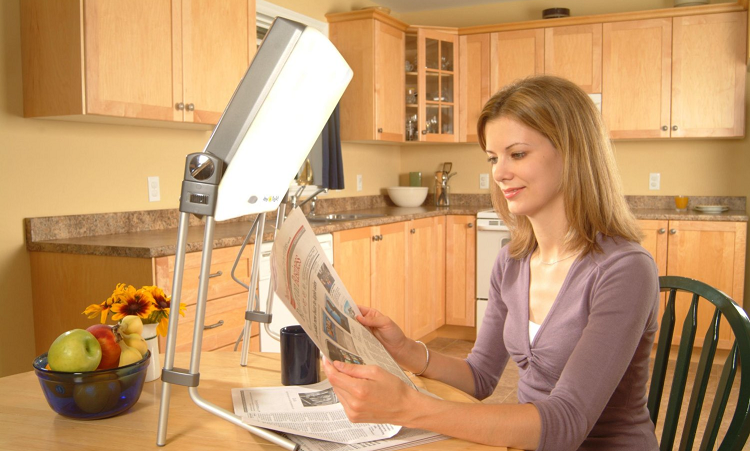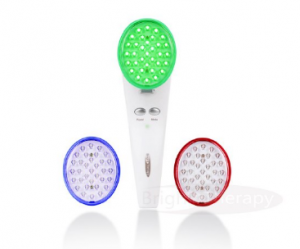What It Is…
Light therapy is a natural form of therapy that can treat a wide array of conditions and disorders through the power of light. With patience, dedication, and a schedule that fits your lifestyle, light therapy can make you feel at the top of your game at all times!
Light therapy can be used to treat mental disorders such as seasonal affective disorder, depression, insomnia, bipolar disorder, jet lag, and more. It is also used to treat physical conditions such as acne, skin rejuvenation, scar healing, chronic pain, joint and muscle pain, wound healing, and so much more. In this article, we are going to discuss how light therapy treats mental disorders. Light can cure your depression?! What?!
How It Works…
The main concept of light therapy is using a form of artificial light, such as a light box or lamp, which mimics natural outdoor light. The use of artificial light affects the brains chemicals, such as serotonin, which are linked to mood and sleep. Light therapy also targets the same brain structures that anti-depressants are meant to target. This opens up a whole new world for this all natural, drug-free, harm-free, cost-effective therapy!
Light therapy and our biological clock go hand in hand. Our body’s biological clock keeps our body rhythms and sleep-wake cycles in sync with the earth’s light-day cycles. Our biological clock, often referred to as our circadian rhythm, is located in the suprachiasmatic nucleus (SCN) in the hypothalamus, the brain’s hormone control center. It’s controlled by four neurotransmitters – dopamine, norepinephrine, glutamate, and GABA. These neurotransmitters are chemicals that enable function within our brain.
When our eyes are exposed to light, this part of our brain is activated and production of melatonin, a sleep hormone, is reduced. Reducing the production of melatonin in our brains allows a stable increase of seratonin, the hormone that keeps us awake and gives us energy. Exposing our eyes to light also releases a wide array of hormones for other mental functions and affects our body’s temperature.
“Human beings evolved under the day-night cycle. It is the natural time-keeper that sets our biological clocks within our brains and organs throughout the body.”
-Richard Schwartz, MD, associate clinical professor of psychiatry,Harvard Medical School
We are more linked with the earth than most people would like to believe. Our brains are extremely susceptible to light, the weather, and the natural cycles of the earth. Strangely, we are programmed to cycle naturally every 24.2 hours. However, because we are so linked to the earth’s rhythms and our exposure to light on a daily basis, our cycle changes. We are closely linked to the earth and that’s important to understand first and foremost when it comes to light therapy.
Seasonal Affective Disorder (SAD):
Light therapy is used to treat Seasonal Affective Disorder, or SAD, most commonly in the fall and winter months. When the sun begins to set way too early and/or there is very little sunlight throughout the day at all, it is very easy for SAD to creep in and take over your life. Being exposed to bright light for a set amount of time each day can help treat or reduce the symptoms of SAD.
Depression:
Just like Seasonal Affective Disorder, choosing a strict daily light therapy schedule is the best way to see results when it comes to treating or reducing the symptoms of depression. The main goal of light therapy in regards to depression treatment is to reduce the production of melatonin while increasing the production of seratonin. More seratonin = happy mind!
Insomnia:
The more bright light that is received during the day, especially earlier on in the day, the more likely we are to produce an adequate amount of melatonin at night. More bright light also reduces the brain’s sensitivity to small light exposure in the night time.
Bipolar Disorder:
Light therapy is not a 100% proven treatment for Bipolar Disorder, but it is on the radar and being used by many patients. Since one of the main symptoms of Bipolar Disorder is depression, light therapy is an extremely viable treatment plan. Plus it can reduce patient’s medicinal intake which is great due to the fact that bipolar medications often have awful side effects.
Best Brands for Mental Health Light Therapy…
- Northern Light Technology
- Nature Bright
- Philips
- Verilux











